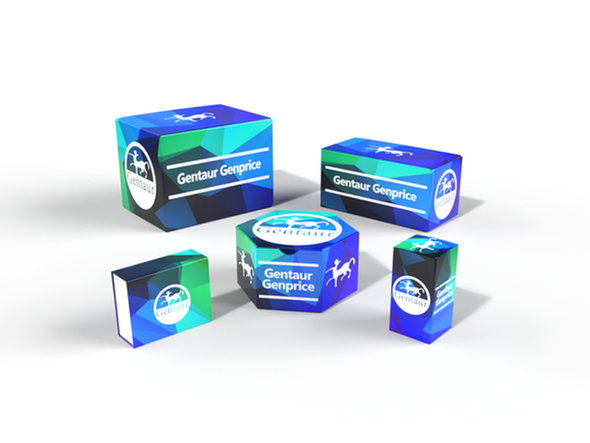749
Rat Gastric inhibitory polypeptide (GIP) ELISA Kit | KTE100840
- SKU:
- 749-KTE100840
- Availability:
- Usually ships in 5 working days
Description
Rat Gastric inhibitory polypeptide (GIP) ELISA Kit | KTE100840 | Gentaur UK, US & Europe Distribution
Application: This Rat Gastric inhibitory polypeptide (GIP) ELISA Kit employs a two-site sandwich ELISA to quantitate GIP in samples. An antibody specific for GIP has been pre-coated onto a microplate. Standards and samples are pipetted into the wells and anyGIP present is bound by the immobilized antibody. After removing any unbound substances, a biotin-conjugated antibody specific for GIP is added to the wells. After washing, Streptavidin conjugated Horseradish Peroxidase (HRP) is added to the wells. Following a wash to remove any unbound avidin-enzyme reagent, a substrate solution is added to the wells and color develops in proportion to the amount of GIP bound in the initial step. The color development is stopped and the intensity of the color is measured.
Detection Method: Colorimetric
Conjugate: N/A
Sample Type: Cell culture supernatants#Serum#Plasma#Other biological fluids
Assay Type: Multiple steps standard sandwich ELISA assay with a working time of 3-5 hours. It depends on the experience of the operation person.
Kit Component: • Rat Gastric inhibitory polypeptide microplate
• Rat Gastric inhibitory polypeptide standard
• Rat Gastric inhibitory polypeptide detect antibody
• Streptavidin-HRP
• Standard diluent
• Assay buffer
• HRP substrate
• Stop solution
• Wash buffer
• Plate covers
Features & Benefits: Rat Gastric inhibitory polypeptide (GIP) ELISA Kit has high sensitivity and excellent specificity for detection of Rat GIP. No significant cross-reactivity or interference between Rat GIP and analogues was observed.
Calibration Range: Please inquire
Limit Of Detection: Please inquire
Usage Note: • Do not mix components from different kit lots or use reagents beyond the kit expiration date.
• Allow all reagents to warm to room temperature for at least 30 minutes before opening.
• Pre-rinse the pipet tip with reagent, use fresh pipet tips for each sample, standard and reagent to avoid contamination.
• Unused wells must be kept desiccated at 4 °C in the sealed bag provided.
• Mix Thoroughly is very important for the result. It is recommended using low frequency oscillator or slight hand shaking every 10 minutes.
• It is recommended that all samples and standards be assayed in duplicate or triplicate.
Storage Instruction: The unopened kit should be stored at 2 - 8°C. After opening, please store refer to protocols.
Shipping: Gel pack with blue ice.
Precaution The product listed herein is for research use only and is not intended for use in human or clinical diagnosis. Suggested applications of our products are not recommendations to use our products in violation of any patent or as a license. We cannot be responsible for patent infringements or other violations that may occur with the use of this product.
Background: Gastric inhibitory polypeptide (GIP), is a member of the secretin family of hormones.GIP is derived from a 153-amino acid proprotein encoded by the GIP gene and circulates as a biologically active 42-amino acid peptide. It is synthesized by K cells, which are found in the mucosa of the duodenum and the jejunum of the gastrointestinal tract.Like all endocrine hormones, it is transported by blood. It is now believed that the function of GIP is to induce insulin secretion, which is primarily stimulated by hyperosmolarity of glucose in the duodenum. After this discovery, some researchers prefer the new name of glucose-dependent insulinotropic peptide, while retaining the acronym "GIP." The amount of insulin secreted is greater when glucose is administered orally than intravenously.
Alternative Names: GIP; Glucose-dependent insulinotropic polypeptide
Search name: GIP; Glucose-dependent insulinotropic polypeptide
Tag: GIP






